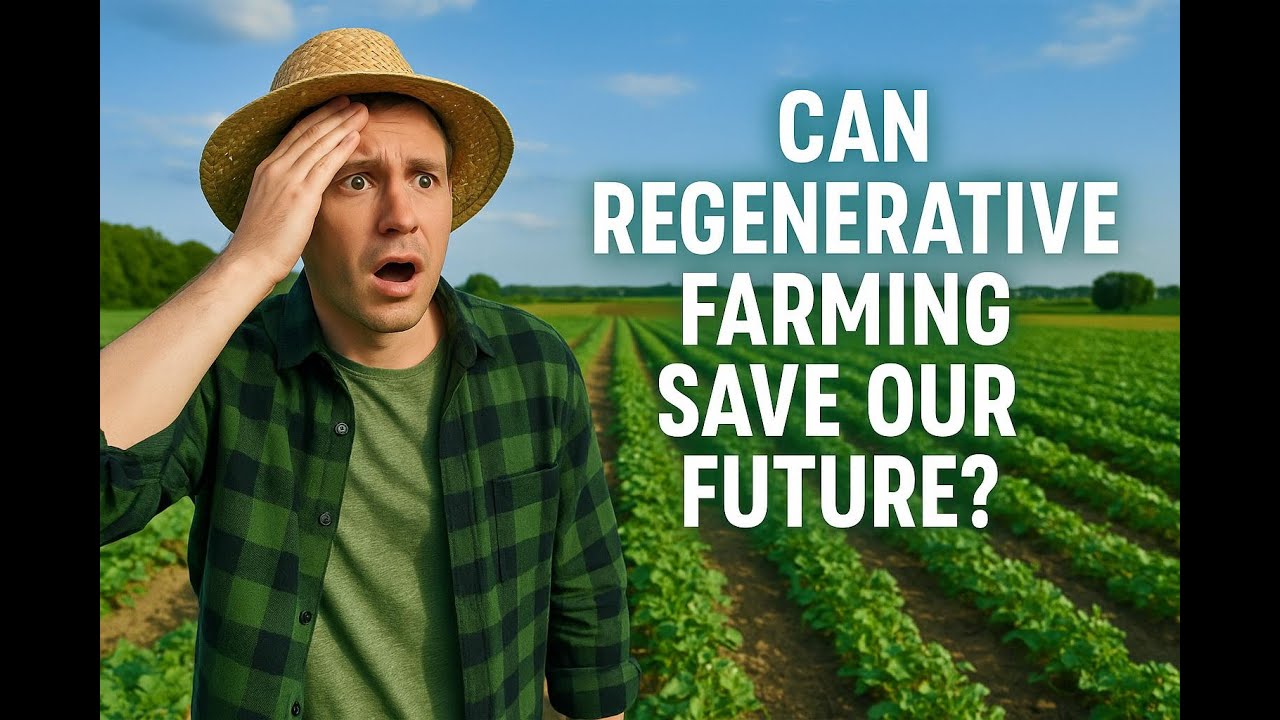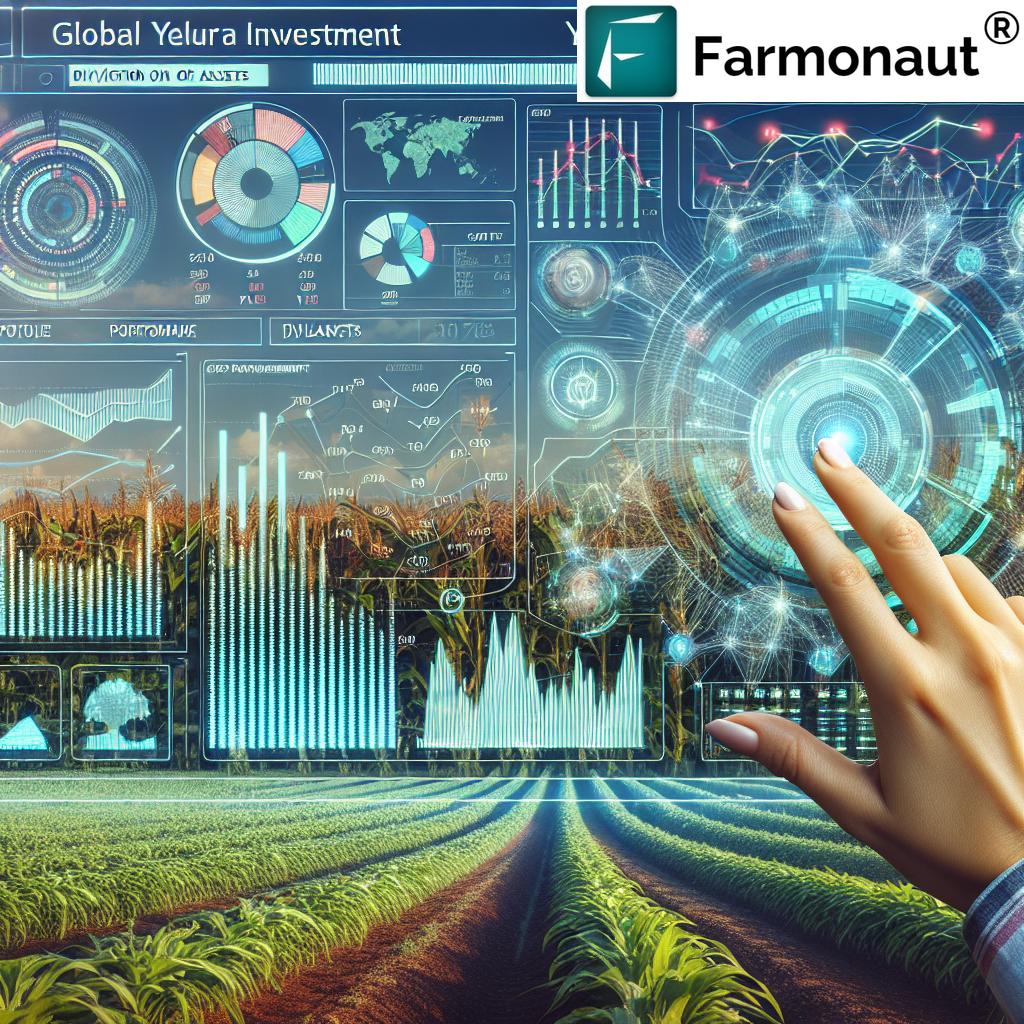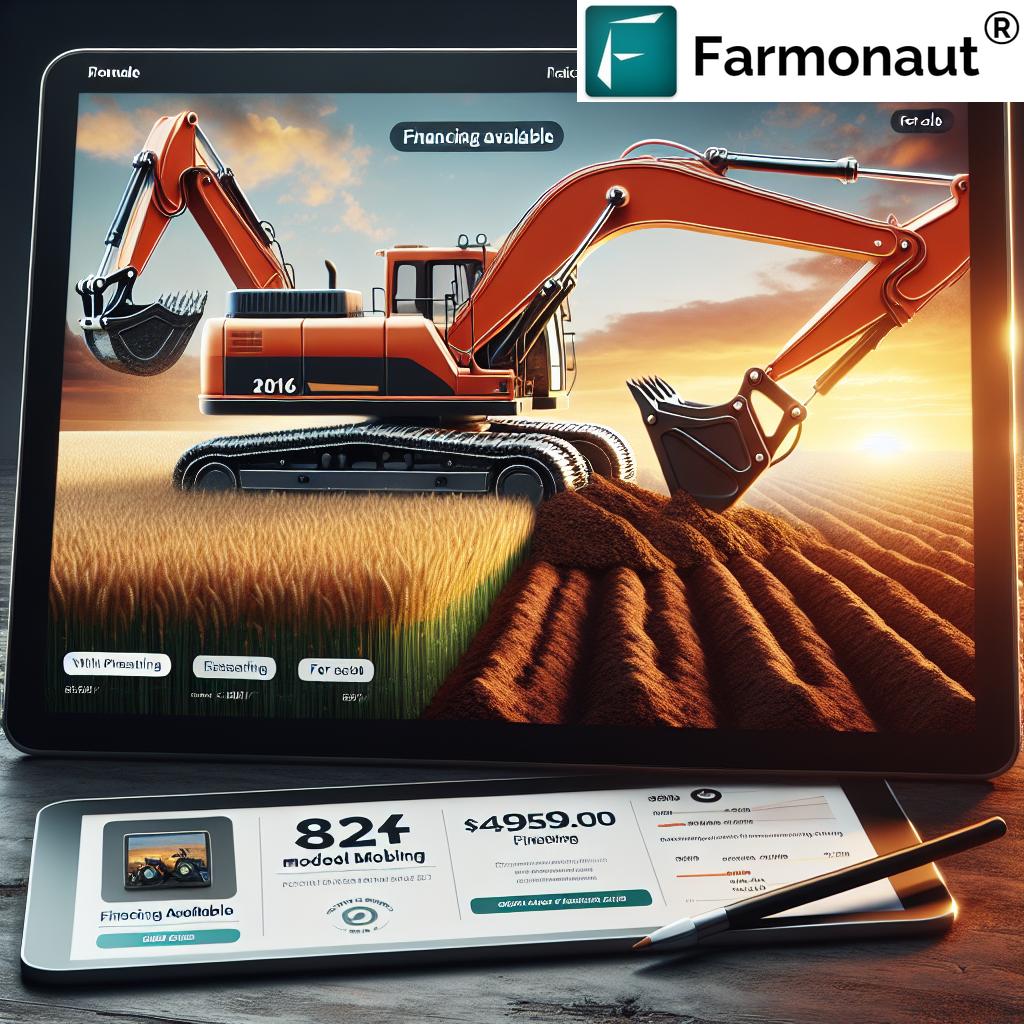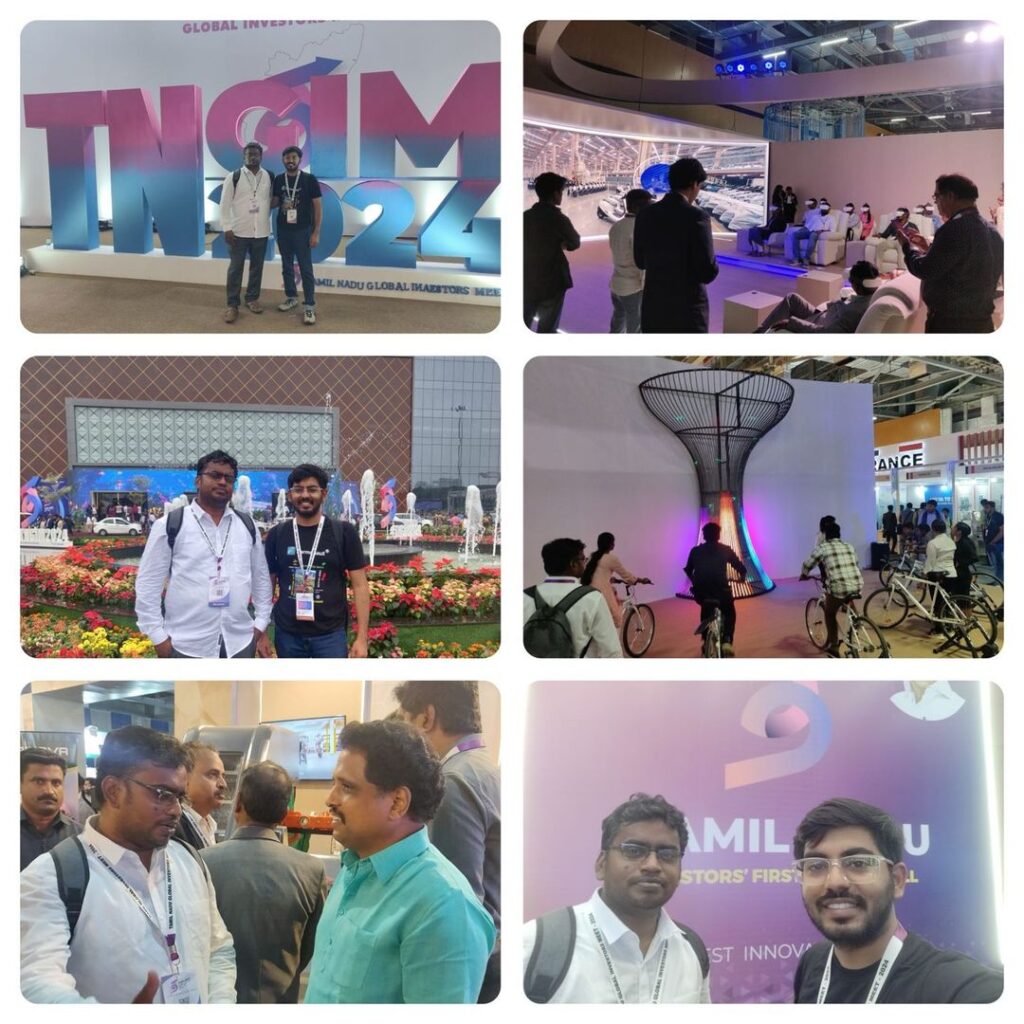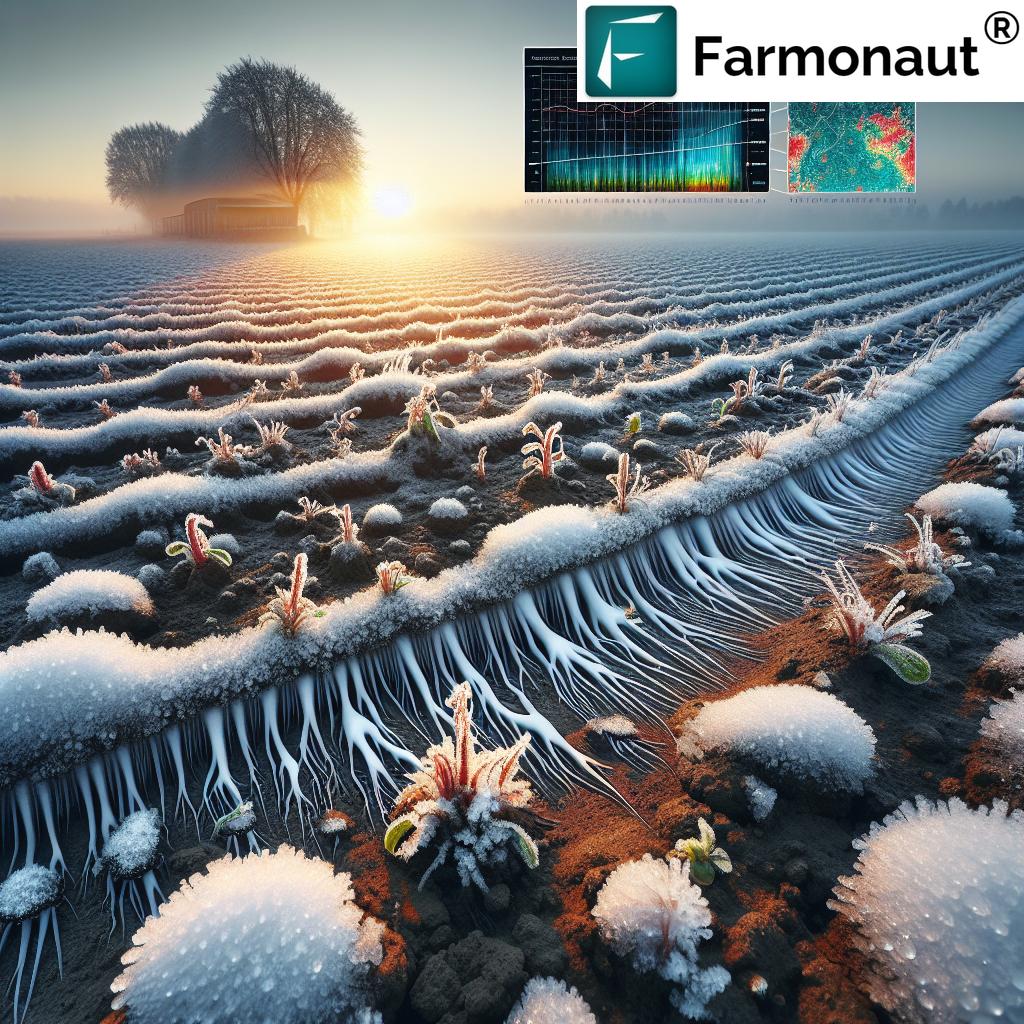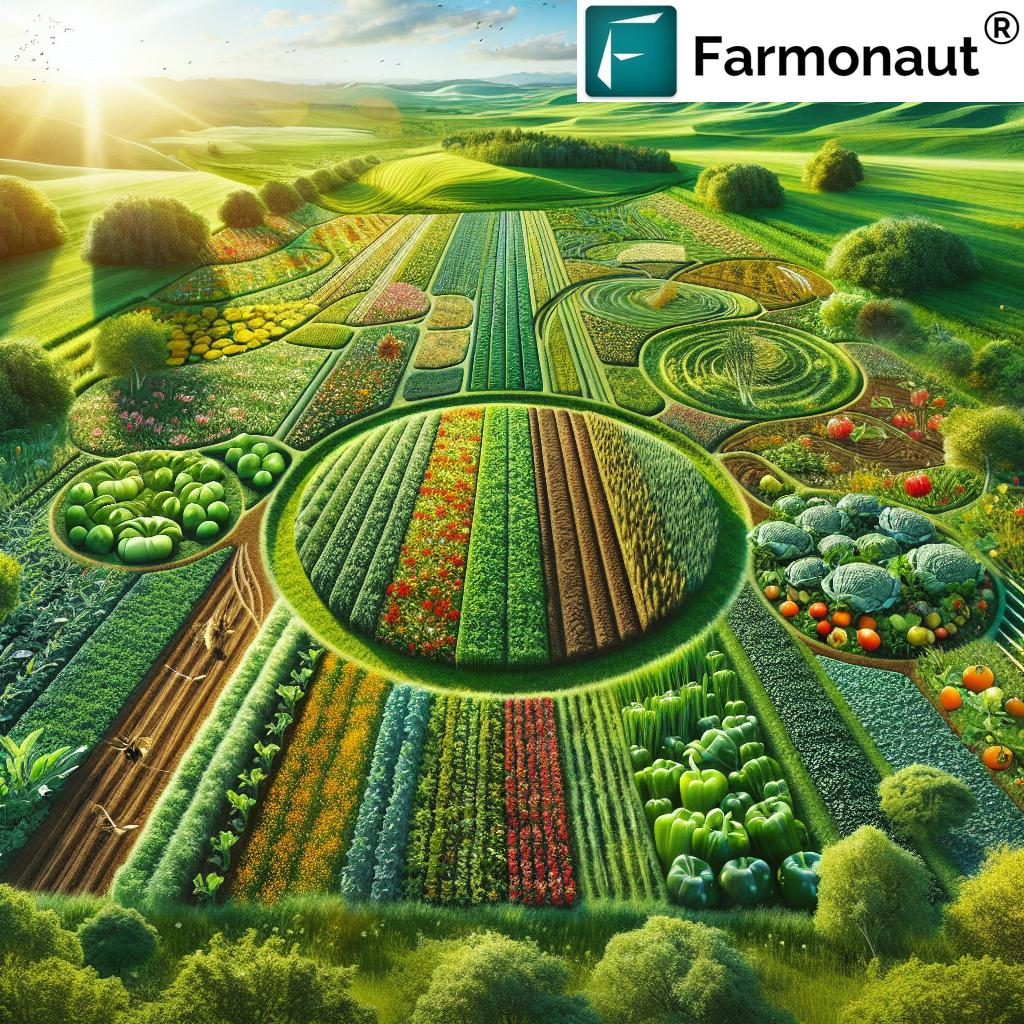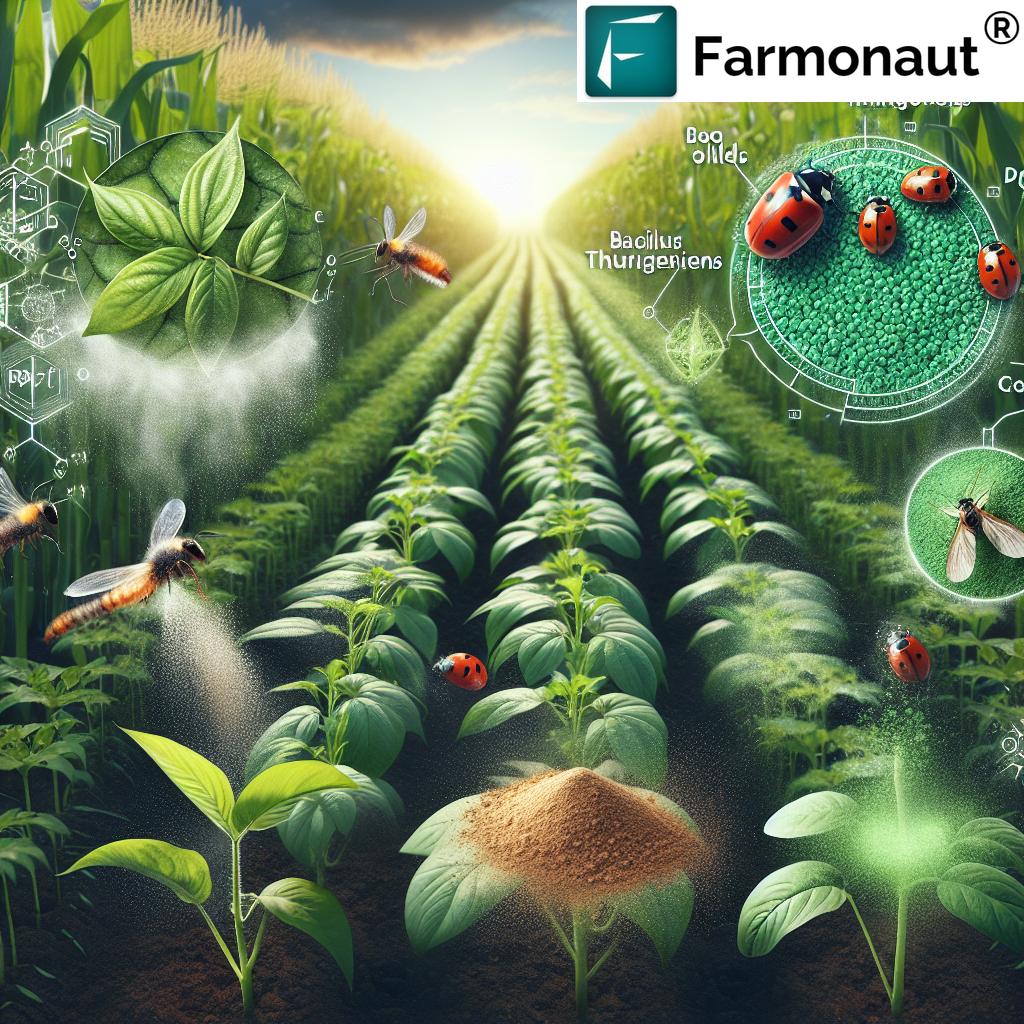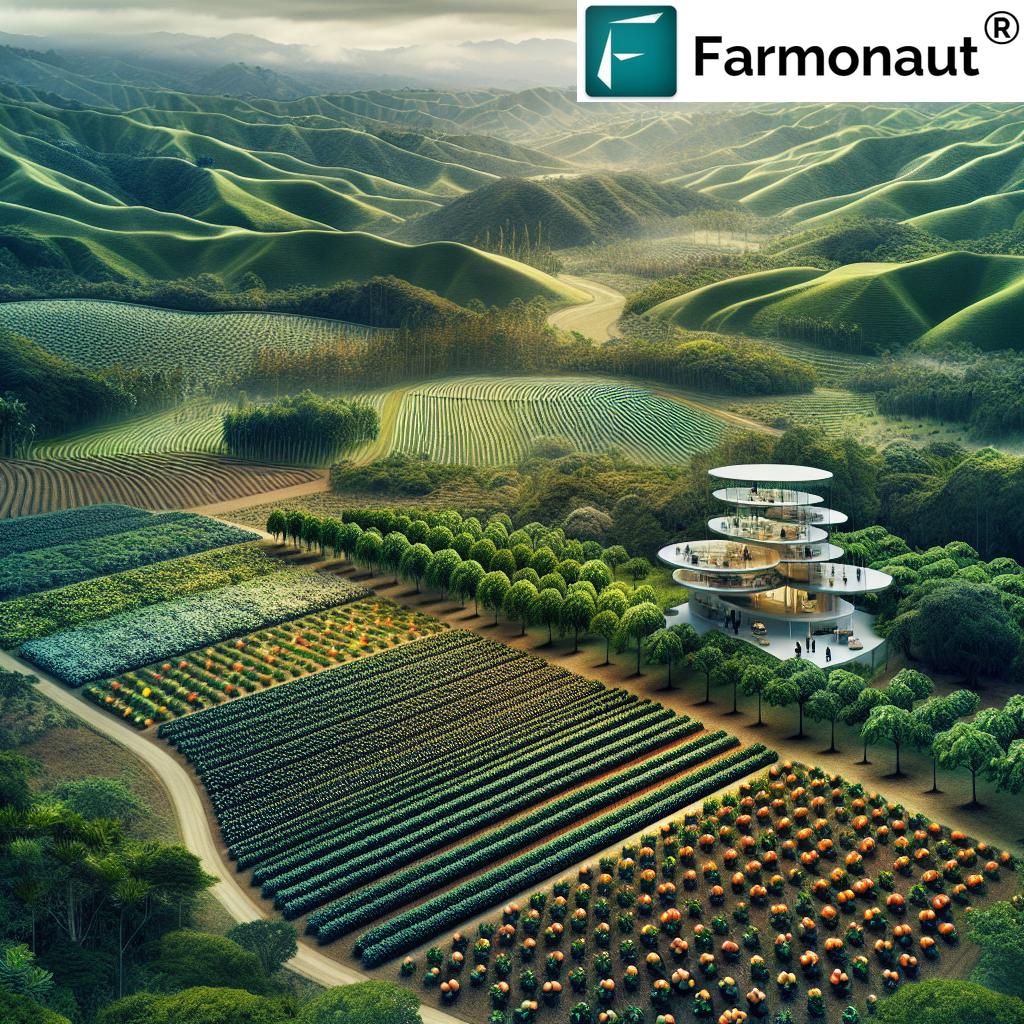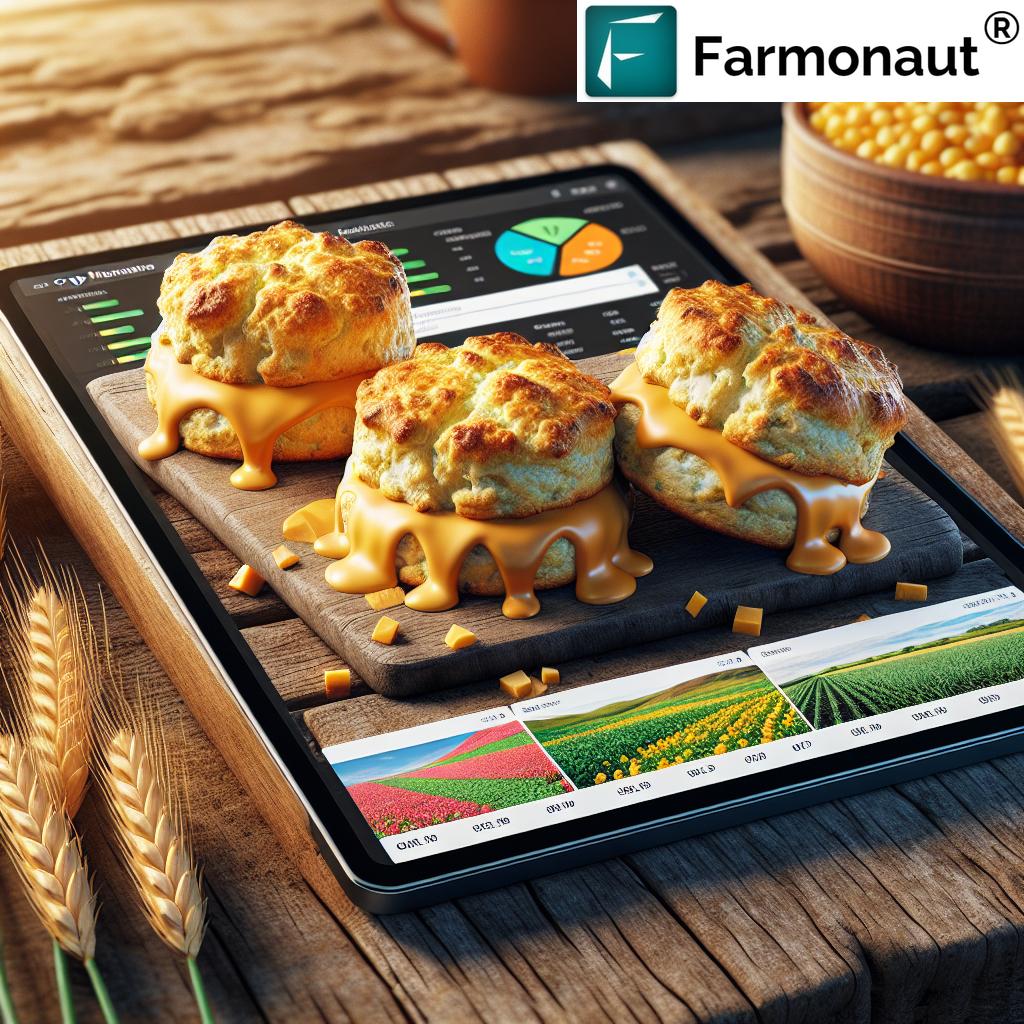Table of Contents
- Introduction: Understanding Tillage Farming in 2025
- Fascinating Facts
- What is Till Farming?
- Benefits and Challenges of Till Farming
- No-Till Farming: The Sustainable Alternative
- Till vs No Till Farming: 2025 Insights
- Educational Videos on Soil, Carbon & Sustainable Agriculture
- Comparative Table: Till vs No-Till Farming (2025)
- Farmonaut: Empowering Sustainable Decisions
- Adoption, Best Practices & Global Trends in 2025
- FAQs
- Conclusion: Making Informed Decisions for the Future
“No-till farming can reduce soil erosion by up to 90% compared to conventional tillage in 2025 studies.”
Till vs No Till Farming: 2025 Insights & Benefits
As agriculture enters a new era shaped by sustainability and technological innovation, till vs no till farming remains a central conversation in modern farming communities worldwide. With 2025 ushering in increasing awareness of climate impact, soil health management, and resource conservation, farmers, researchers, and policymakers are evaluating the best methods to ensure high productivity and sustainable environmental outcomes. In this comprehensive blog, we explore the key differences, implications, and benefits of till vs no-till farming, assemble leading insights from modern agricultural practice, and highlight how platforms like Farmonaut are helping agriculture shift toward a more resilient, data-driven future.
What is Till Farming? Understanding Tillage in Agriculture
Till farming, commonly referred to as till agriculture, is a traditional agricultural practice that involves physically manipulating and turning the soil using mechanical tools (e.g., plows, rototillers, and harrows) before planting crops. This practice has been the backbone of crop production for centuries, shaping the agricultural landscapes worldwide.
Tillage methods encompass several distinct activities:
- Plowing: Turning over and breaking compacted layers of soil to ease root penetration and improve infiltration.
- Harrowing & Cultivating: Loosening and fine-tuning the seedbed to support uniform germination and healthy crop growth.
- Residue Incorporation: Burying previous crop residues to reduce weed seeds, pests, and pathogens.
Traditionally, till farming has been highly valued for its role in weed control, seedbed preparation, and optimizing crop growing conditions. However, as we approach 2025, the impacts of till agriculture on environmental sustainability and soil health call for a deeper understanding and reevaluation.
Benefits and Challenges of Till Farming in Modern Agriculture
Key Benefits of Till Agriculture
- Weed Control: Tillage activities disrupt weed growth by uprooting and burying seeds, effectively reducing competition for crops.
- Seedbed Preparation: Loosening the soil creates an ideal environment for seed germination, root expansion, and improved contact between seed and soil.
- Pest & Disease Management: Burying residues can reduce insect life cycles and interrupt disease inoculum by breaking crucial cycles.
- Soil Aeration: Breaking compacted layers through plowing enhances oxygen availability for roots and beneficial microorganisms.
- Residue Incorporation: Helps manage previous crop residues and ensures a clean field surface for planting crops.
Modern Challenges in Conventional Tillage
- Soil Erosion: Constant soil disturbance leaves the surface exposed to wind and water erosion, leading to significant topsoil loss and degrading land productivity.
- Loss of Soil Organic Matter: Frequent tillage and exposure accelerate decomposition of organic matter, slowly reducing soil fertility each season.
- Soil Structure Degradation: Continuous plowing and compacting can break down important soil aggregates, causing water runoff and reduced water retention.
- Increase in Greenhouse Gas Emissions: Turning over the earth releases carbon dioxide from soil carbon pools, contributing to climate change.
- Pest and Disease Adaptation: Some pests and weeds adapt to frequent tilling, requiring integrated management for effective control.
- Labor & Input Costs: More passes over the field result in increased fuel, labor, and machinery costs.
“In 2025, no-till fields store 30% more soil carbon than tilled fields, aiding climate change mitigation.”
No-Till Farming: The Sustainable Alternative in 2025
As environmental impacts and sustainability goals receive heightened focus in 2025, no-till farming has emerged as a leading method for improving soil health, water retention, and climate resilience. In a no-till system, crops are planted directly into undisturbed soil without prior tillage. Residue cover is left on the field surface, dramatically reducing disturbance.
How Does No-Till Agriculture Work?
- Minimal Soil Disturbance: No-till involves zero or greatly reduced mechanical turning of the soil, maintaining the natural structure and biological activity.
- Residue Management: Crop residues from the previous cycle are left on the surface, helping protect it from erosion and conserving soil moisture.
- Cover Crops: Used to enhance organic matter, supply nutrients, and prevent weed growth during off-seasons.
- Integrated Weed Management: With less physical weed control, herbicide use, crop rotations, and cover-cropping are integrated to manage weeds.
No-till farming delivers significant benefits for soil health, water retention, carbon sequestration, and farming sustainability.
No Till vs Till Farming: Key Differences in 2025
- Soil Health: No-till systems preserve soil structure, enhance organic matter retention, and foster greater microbial activity.
- Carbon Sequestration & Climate Impact: No-till fields are better carbon sinks, slowing climate change.
- Erosion Control: Surface residue cover acts as a shield, keeping soil in place during rain or wind events.
- Water Infiltration & Retention: Less soil compaction and a strong aggregate structure improve infiltration and water retention.
- Chemical Use: Often relies more on careful herbicide and integrated strategies for weed management.
- Labor & Machinery Costs: Fewer field operations reduce labor, fuel, and machinery wear.
- Crop Yields: Initial yields after switching to no-till may dip, but long-term yields often match or exceed till farming as soil conditions steadily improve.
Comparative Table: Till vs No-Till Farming (2025)
| Farming Practice | Soil Health Impact (2025 est.) | Crop Yield (2025 est.) | Greenhouse Gas Emissions (2025 est.) | Erosion Rate (2025 est.) | Water Retention (2025 est.) |
|---|---|---|---|---|---|
| Till Farming | Moderate (declining organic matter) |
6.2 t/ha (average, initial benefits, potential long-term decline) | High (1.3–2.1 t CO2-eq/ha/yr) |
High (up to 5-10 t/ha/yr soil loss) |
Low (surface sealing, frequent runoff) |
| No-Till Farming | High (30% higher organic matter, improved structure) |
6.4–7.1 t/ha (matches or exceeds after 3+ years) | Low (0.8–1.3 t CO2-eq/ha/yr) |
Low (up to 90% reduction in soil loss) |
High (improved infiltration & retention) |
This table illustrates the clear sustainability and productivity benefits of no-till systems compared to conventional tillage for the future of agriculture in 2025.
Educational Videos on Soil, Carbon & Sustainable Agriculture
Farmonaut: Empowering Data-Driven, Sustainable Farming Decisions
As global agriculture transitions toward sustainability in 2025, access to reliable, actionable data is essential. At Farmonaut, we leverage cutting-edge satellite technology, AI, and advanced analytics to empower farmers and agribusinesses with deep soil, crop, and field health insights. This enables informed choices between till farming and no-till options.
- Satellite-Based Monitoring: Real-time multi-spectral images reveal changes in vegetation health, soil structure, and water availability—ideal for tracking impacts of tillage practices.
- AI-Driven Advisory: With our Jeevn AI system, users receive forecasts and field-specific advice for maximizing yield and minimizing environmental disturbance.
- Blockchain Traceability: Our traceability solutions ensure supply chain transparency, especially vital for sustainable or regenerative produce.
- Resource Management Tools: Improve fleet efficiency and field operations using Farmonaut’s fleet management modules. Reduce input wastage, optimize labor, and cut machinery costs.
- Environmental Impact Monitoring: Using our carbon footprinting solution, you can monitor your farm’s carbon emissions and adapt practices for greater sustainability.
- Financing & Insurance: For growers seeking credit, Farmonaut delivers crop loan and insurance verification through satellite data, helping reduce fraud and streamline claims.
Want to integrate these advanced solutions into your own platform? Explore our Farmonaut APIs, and for developers, detailed API documentation to get started quickly.
Adoption, Best Practices & Global Trends: Till vs No Till Farming in 2025
Global Adoption and Evolving Practices
In 2025, regions such as North America, South America, Australia, and increasingly Asia and Africa, show high rates of no-till adoption. Areas where soil degradation, erosion, or water scarcity are major threats witness a faster shift from till farming to no-till methods.
- Conservation Tillage: Many modern farmers blend the benefits of both systems, using reduced tillage depth and frequency, combined with residue retention—a practical compromise for specific field conditions.
- Integrated Pest & Weed Management: No-till does require careful integration of cover crops, planned rotations, and smart herbicide strategies for balanced weed and pest control.
- Precision Agriculture: Advanced platforms, such as those offered by Farmonaut, are increasingly utilized to monitor and optimize resource use, disease management, and yield potential—maximizing productivity while supporting sustainability.
Best Practices for a Sustainable Tillage Transition
- Evaluate Field Conditions: Assess soil texture, organic matter, previous crops, and pest pressure before shifting from till to no-till or conservation systems.
- Maintain Continuous Residue Cover: Prioritize cover crops and manage residues to protect against erosion and retain soil moisture.
- Adopt Crop Rotations: Diversity in crops disrupts pest cycles and helps manage weeds.
- Implement Integrated Pest Management: Monitor pest and weed pressure and use a blend of mechanical, chemical, and biological methods.
- Leverage Real-Time Monitoring: Leverage technologies such as Farmonaut’s platform to continuously monitor crop health, soil moisture, and carbon levels.
- Monitor and Adjust: Evaluate yields, soil health, and environmental performance regularly to tweak techniques for optimal outcomes.
Challenges When Adopting No-Till Systems—and Solutions in 2025
- Equipment Adjustment: Direct-seeding and no-till drills may require initial investments. However, reductions in fuel and labor provide long-term savings.
- Weed Pressure: Early years may see higher weed populations; integrated weed management is essential.
- Residue Management: Thick residue may interfere with seed placement in cool, wet climates—managing planting timing and using appropriate equipment resolves these issues.
- Knowledge & Skill: Training and technical support, as delivered by platforms like Farmonaut, help bridge the knowledge gap for a smooth transition.
Frequently Asked Questions: Till vs No Till Farming (2025)
1. What is the main difference between till and no-till farming?
Till farming involves mechanically turning and preparing the soil before planting, while no-till farming plants crops directly into undisturbed soil, maintaining surface residue. No-till systems substantially reduce soil disturbance compared to conventional tillage.
2. Does no-till farming reduce yields?
In the short term, yields may temporarily stabilize or drop during the transition to no-till. However, by 2025, long-term studies show that no-till can match or surpass yields of till farming as soil health improves.
3. What are the main soil health benefits of no-till vs till farming?
No-till preserves soil structure, increases organic matter, microbial activity, and carbon retention; while till farming tends to degrade these qualities over time.
4. How does no-till farming affect greenhouse gas emissions?
No-till significantly reduces carbon dioxide emissions by keeping soil carbon sequestered. Estimates for 2025 suggest a 20-40% reduction compared to conventional tillage.
5. Is no-till suitable for all crops and soils?
Most crops can thrive with no-till, but adaptation requires planning. Soil type, drainage, and climate should be assessed before implementing a no-till system.
6. Can technology help optimize decisions between till and no-till?
Absolutely. Platforms like Farmonaut use satellite imagery and AI to provide real-time, actionable insights for selecting the best tillage approach based on local field conditions, weather, and crop health data.
Conclusion: Making Informed and Sustainable Choices for 2025 and Beyond
Understanding till vs no-till farming is pivotal as we move toward a sustainable agricultural future in 2025 and beyond. While tillage was once a cornerstone of high-yield agriculture, its environmental impacts—such as soil erosion, carbon loss, and ecosystem disturbance—now drive the adoption of no-till and conservation tillage practices.
No-till farming—with its strong results in soil health, water retention, carbon sequestration, and resilience to climate change—is positioned as the sustainable agricultural practice of choice. Modern technologies, precision data, and integrated management allow for more targeted, productive, and environmentally responsible decision-making than ever before.
As we at Farmonaut continue to innovate with advanced satellite technology and actionable insights for farmers, agribusinesses, and governments, the journey to sustainable agriculture becomes clearer, actionable, and attainable on a global scale. We invite you to join us in driving this crucial transformation for the health of our soils, crops, and planet.






